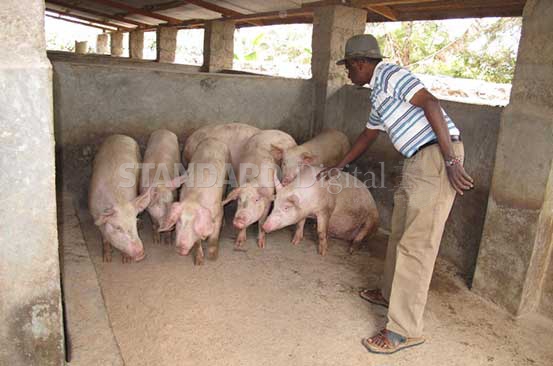
Pig farming has several advantages including quick herb multiplication and rapid investment turnover with minimal expenditure on building and equipment. In Kenya, there is a well paying pork processing and hotel industry that produces bacon, ham, sausages and lard. Pork has a relatively higher energy value and is rich in vitamin B1, B2 and Niacin. Pig fat has also found industrial use in chicken feed, soap and paints manufacture. Pig manure can be used as fertiliser in agriculture and fish ponds.
When properly reared and bred, a sow (female pig) can give birth to up to 12 piglets and they can do this for up to two times a year. Pigs grow fast and can be served at eight months old. In other words; with just one sow you can quickly establish a farm within one year.